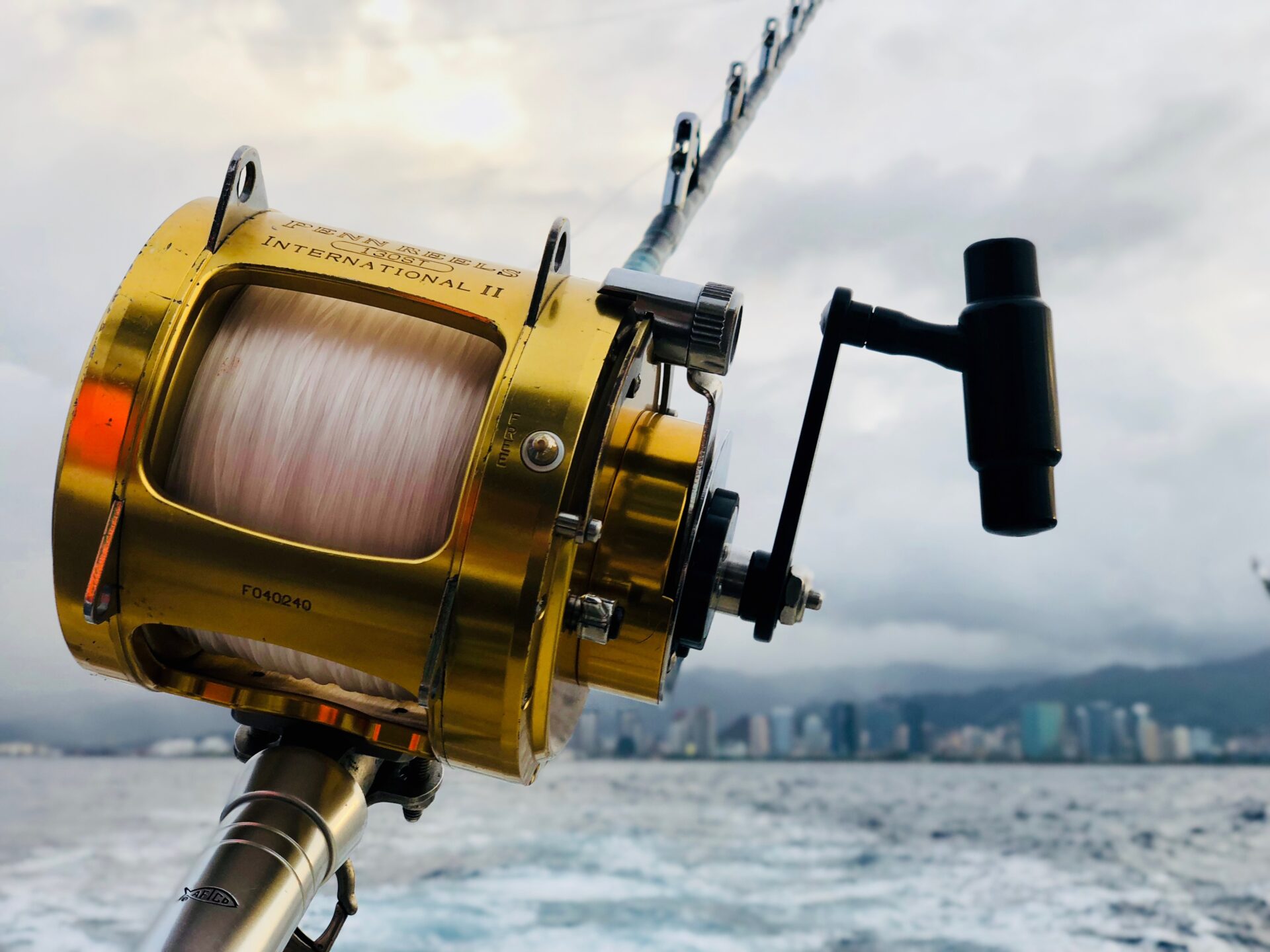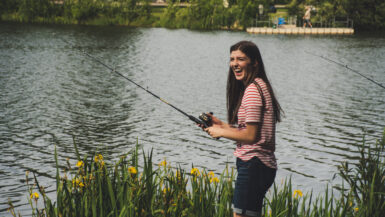Fishing for bluegill with live bait can be a surprisingly fun and rewarding experience. They are one of the most common freshwater fish and are found in most of the United States. Bluegill are an aggressive fish known to bite almost any type of bait, so they make a great target for novice and experienced anglers alike. Fishing for bluegill with live bait can be quite productive, especially when fishing in shallow waters. In this article, we will discuss the best live baits for bluegill, how to rig your line, and the proper technique for catching bluegill. With these tips, you will be able to catch more bluegill with live bait.
Gather Your Supplies
Before you can embark on your fishing excursion for bluegills, you’ll need to gather up some essential supplies. There are various items you’ll need to make sure you have on hand in order to be successful in catching this type of fish. Here is a list of supplies you should have to ensure the best results:
- Fishing pole or rod
- Baitcasting or spinning reel
- Proper fishing line
- Hooks and weights
- Sinkers
- Swivels
- Live bait compatible with bluegill
- Bait bucket
- Needle-nose pliers
- Nets or a grabber
- Fish cooler
A fishing pole or rod should be lightweight and have a flexible tip that will enable you to cast with greater accuracy. If you’re new to bluegill fishing, you may want to try a spinning reel setup. This will help you with your casting and offer more control over your bait. You’ll also want to make sure you have the right type of fishing line. A light monofilament line or a fluorocarbon line that’s rated between 4 and 8 pounds is ideal for this type of fishing.
Bait and Tackle Options for Catching Bluegill
When it comes to bait, you’ll need to choose the right type that will entice the bluegill to bite. Live bait such as earthworms, crickets, mealworms, wax worms, and minnows are all good options. You will also need various tackle items such as hooks, weights, and sinkers. A number 6 or number 8 hook is a great size for catching bluegill. The hook should be light enough so it won’t weigh down your bait, but heavy enough to hold the bait in place.
You can also use a bottom-bouncing rig or a float rig when fishing for bluegill. Make sure you have the right weights, swivels and other necessary items to set up your rig correctly. You may also want to invest in a bait bucket to keep your live bait in. This will make it easier to transport your bait to the lake or pond. Other items you may need are needle-nose pliers, nets or a grabber, and a fish cooler.
Once you have all of your supplies gathered and ready, you’ll be set and ready to go on your bluegill fishing adventure.
Find the Right Fishing Spot
When it comes to fishing for bluegill, it’s important to find the right spot. Bluegill can usually be found in shallow, weedy areas of lakes and ponds. In terms of bait, they will usually go for anything that is small, such as worms, insects, small crustaceans, and minnows. Look for areas with plenty of vegetation, as this will attract bluegill. Also, be sure to look for places where there is structure, such as logs, stumps, and rocks.
What to Do When You Find a Spot
Once you’ve located a spot that matches the above criteria, it’s time to start fishing. Begin by using a smaller hook (size 8 to 10) and thread the hook with a worm. Cast the bait about six feet away from the edge of the vegetation and let it sit for a few seconds before giving it a small tug. This will give the bait a little bit of movement and will attract the attention of any fish in the area.
Tips and Tricks
When fishing for bluegill, you want to stay as quiet as possible. The fish are easily spooked and will swim away if they sense any movement or noise. Also, be sure to use lighter line and still a light touch when reeling in the fish. Keep in mind that bluegill aren’t big fighters, so it’s important to use a light hand when reeling them in.
Once you find a good spot, you can experiment with different baits to see what works best. You can also try different depths to see if the fish are biting at different levels. When you find a spot that works well, mark it on your GPS so you can remember it and return to it in the future. With the right spot, bait, and technique, you can successfully catch bluegill with live bait.
Choose the Right Live Bait
Fishing for bluegill with live bait can be an effective and fun way to catch this beloved fish. In order to have the best success with bluegill, it is important to choose the right live bait. The following are some key tips to consider when selecting live bait for bluegill fishing.
Types of Live Bait for Bluegill
Live baits can either be natural, such as insects and worms, or artificial, such as lures. Natural baits are usually found in ponds and rivers, and can be collected with a net or a baiting hook. Artificial baits are typically sold in fishing stores, and come in a variety of shapes and sizes.
Factors to Consider When Selecting Live Bait
When selecting live bait for bluegill fishing, there are several factors to consider. First, it is important to choose bait that is the correct size for the bluegill. The bait should be small enough to fit in the fish’s mouth, as larger baits are likely to be rejected. Secondly, the color of the bait should be chosen carefully. Bluegill are attracted to bright, colorful baits, such as those with sparkles or stripes. Finally, it is important to choose bait that is durable and stands up to the elements.
Tips for Storing Bait
Once you’ve selected the right bait for bluegill fishing, it is important to store it properly. Live bait should be stored in a cool, dark place, such as a refrigerator or a bait tank. It is also important to keep the bait moist and free from debris. To ensure the bait stays fresh and alive for longer, it is best to use an aerator or a bubbler.
Applying Bait to the Hook
It is important to apply the bait to the hook properly in order to attract bluegill. When using natural bait, such as worms, it is best to thread the worm onto the hook. For artificial lures, it is important to use a special bait attachment tool, as this will ensure the lure stays in place.
By following these tips and selecting the right live bait, anglers can increase their chances of catching bluegill when fishing with live bait. With the right bait and the proper storage and application techniques, anglers can enjoy a successful bluegill fishing trip.
Cast the Line
Before you can cast your line, you need to make sure you have all the supplies needed for a successful fishing trip. This includes a sturdy rod and reel, live worms, and your tackle box filled with a variety of hooks, sinkers, and other equipment. Make sure you also have a net and a bucket or cooler to keep the fish alive and fresh until you are done fishing.
Choose Your Location
When looking for a spot to fish, look for areas with deep water, plenty of vegetation, and cover. Bluegill prefer to feed near the bottom of the water column, so it helps to have access to deeper areas. If possible, look for areas with cover, such as fallen logs, overhanging trees, or aquatic vegetation.
Prepare the Bait
Now that you have your supplies and a location to fish, you need to prepare your live bait. Live worms work best for catching Bluegill, as they are easy to thread onto the hook and will attract the fish’s attention. Once your bait is prepared, you can move on to the next step.
Cast the Line
Once you are in a good spot, it is time to cast the line. Hold the rod and reel in your dominant hand, with the line in the other. Wind the reel until there is about 10 or 12 feet of line in the water and then cast the line. Make sure the bait goes in the water, not on the ground.
Set the Hook
Once the bait is in the water and you have felt a tap or two, it is time to set the hook. To do this, you need to turn the reel handle quickly and gently pull up on the rod. This should set the hook in the fish’s mouth. Once you have done this, you can start to reel in the line.
Secure the Fish
Once you have reeled in the fish, it is important to secure it quickly and safely. Use a net or by hand, depending on the size of the fish. Once you have secured it, you can take it off the hook and put it in the bucket or cooler. If you plan to release the fish, make sure to do so as soon as possible.
Wait Patiently
Before heading out to the lake to spend your day fishing for bluegill with live bait, you’ll need to prepare the supplies you need for a successful day. This should include your rod and reel, fishing line, hooks, bait, a landing net, and a bucket or creel for your catch.
Find the Right Spot
Once you get to the lake, look for a spot with calm, shallow water. Bluegill tends to stay in shallower water, and the most likely spots are near logs, rocks, vegetation, or shoreline structures. Anchor your boat near your chosen spot and make sure the current is not too strong.
Choose Live Bait
Live bait is the best option to use when fishing for bluegill. Worms and large insects are usually the top choice of bait, but you can also use grasshoppers, small minnows, or crickets. Ensure that your bait is securely attached to the hook so that it doesn’t slip off while you are fishing.
Wait Patiently
Once you have found the right spot and attached your bait to the hook, simply cast your line into the water and wait for a bite. Be patient, as bluegill can take some time to bite. If you are not catching anything after a few minutes, move to a different spot and try again.
Know When to Reel It In
Bluegill are small- to medium-sized freshwater fish, so when fishing for them it’s important to keep your expectations realistic. While you may be tempted to attempt to catch large bluegill, the chances of success are slim. When fishing with live bait, bluegill are typically between 4 and 8 inches in size.
Monitoring Bite Activity
When it comes to fishing for bluegill with live bait, it’s important to pay close attention to the water’s activity. To increase your chances of success, watch for areas of the water that have more bite activity. If you notice the bait being taken quickly, you may have more luck fishing in that area.
Knowledge of Equipment
When fishing for bluegill, it’s important to be aware of the type of equipment you’re using. Choose a rod, reel, line and hooks that are designed to support their size. This will give you a much better chance of actually catching a bluegill instead of losing them.
Knowing When to Reel It In
Once you believe you’ve hooked a bluegill, it’s important to know when to reel it in. Move the rod in an upward direction in order to pull the bluegill out of the water. If you wait too long, or try to lift it too fast, the bluegill may come off the hook. Keep in mind that it may take the bluegill a few seconds to nibble at the bait. So be patient and wait for the fish to fully bite before trying to reel it in.
The Benefits of Fishing with Live Bait
Fishing with live bait is an efficient and effective method for catching bluegill. It requires a simple setup of light fishing line and a hook, and then bait such as worms or crickets. Depending on the size and age of the bluegill, anglers should adjust the hook size accordingly. Once the hook is baited, it is a matter of finding the right spot in the water for the best chance of hooking a bluegill. After a few tries and some patience, the angler will likely be able to experience the joy of catching a bluegill. Fishing with live bait offers a number of advantages that make it a popular strategy for catching bluegill. It offers a more natural experience than lures, allowing anglers to be more in tune with their environment and the fish. Additionally, live bait allows anglers to be more creative in their techniques, providing for more enjoyable fishing trips.





Leave a reply